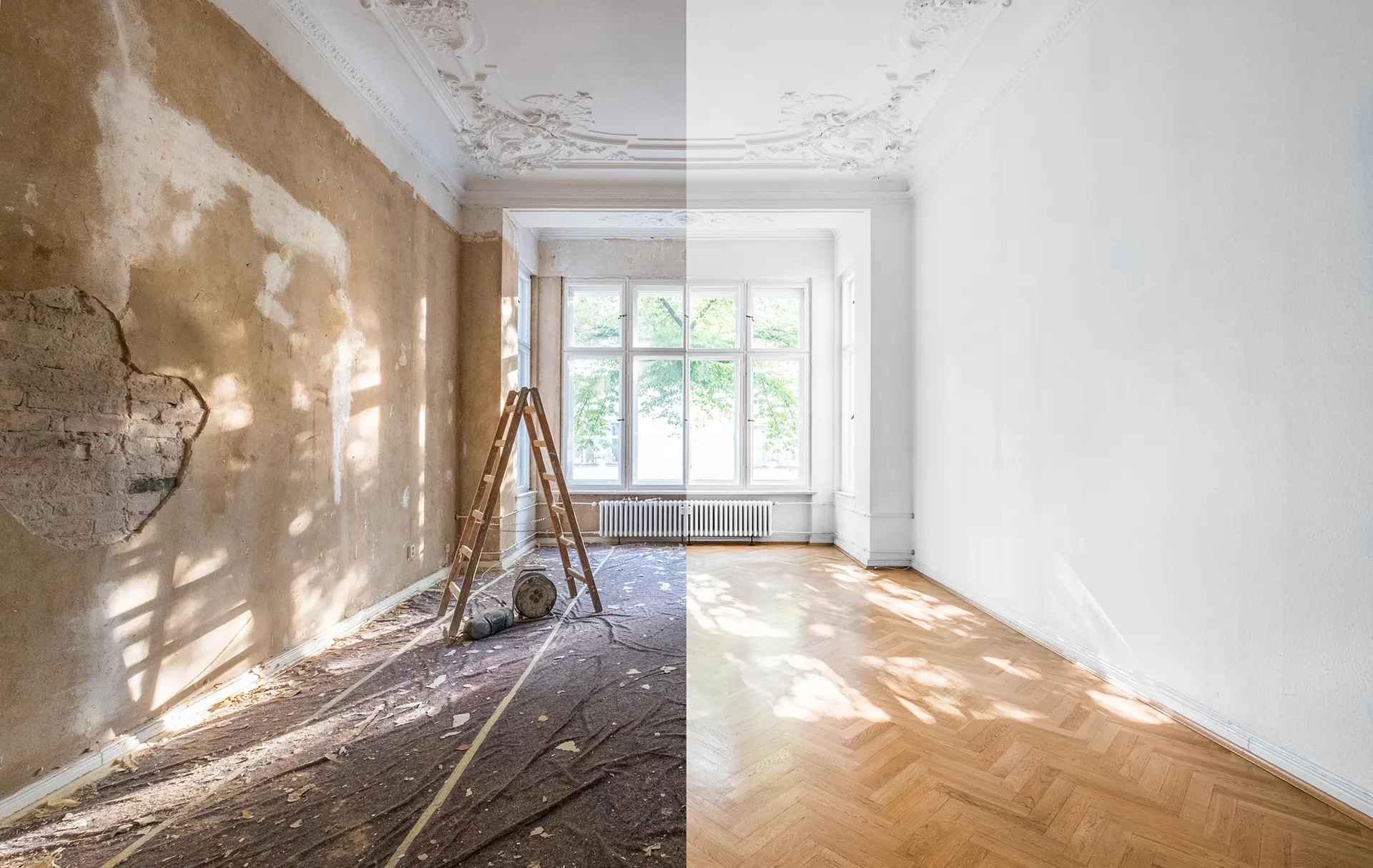When it comes to real estate investments, adopting financing strategies for property rehab and securing the best loans for flipping houses is crucial. Of course, the key to house-flipping loans is finding the optimal house-flipping project since the after-repair value (ARV) must not only pay off the purchase price loan amount but also turn a profit for borrowers. By and large, funding with traditional lenders requires a track record of impeccable personal finance from borrowers.
Given that investment property financing options, like hard money lenders, offer short-term loans commonly requiring the borrower to use an asset, like a home, as collateral to secure the loan, flexible financing options are always available. That is to say, fix and flip loan options can come from various sources. Let’s talk about a few types of loans that are available, what to look out for, and connect you with a mortgage lender that can secure funding. The bottom line is that partnering with a mortgage lender capable of financing a loan to flip a house and streamline the funding process is invaluable.
Creative Loans for flipping houses
HELOCs
Depending on the loan to value of a borrower’s primary residence, financial institutions like credit unions and traditional banks will offer second mortgages. As a result, home equity lines of credit (HELOC) often finance fix and flip home buying opportunities. These home equity loans use a homeowner’s equity as collateral. HELOCs are a better option than financing a personal loan since personal loans often have higher interest rates. What is the borrower’s most significant risk? They risk losing both homes due to default.
Cash-out-refinance Loans
In most cases, homeowners can use the funds from a cash-out refinance loan for anything from down payment, closing costs, origination fees, and repairs. Additionally, these funds are beneficial since they require less money upfront from borrowers. All in all, the most significant consideration is the repayment of the loan. House flippers know that time is of the essence when it comes to renovation timelines. The paramount concern is to keep renovation costs low and timelines short. The last thing real estate investors want is to begin making monthly payments on a flip property with their own money. Just as with HELOCs, borrowers are also at risk of losing two homes if the loan is defaulted on.
Crowdfunding Loans
Another untraditional house-flipping funding source is utilizing crowdfunding sources. Some online crowdfunding platforms offer hard money loans; multiple investors will pool their money to fund your project. These loans offer flexibility since there isn’t a traditional financing agency setting the guidelines for the loan. Remember, there may be balloon payments, interest payments, and other fees associated with the deal. By and large, property taxes are not included in the mortgage payments on these loans, so be sure to set money aside for the unforeseen.
Private Lending
Private lending benefits house flippers by providing quick access to flexible, tailored financing with simplified approval processes, enabling them to seize opportunities and customize deals to maximize profitability.
How does private lending work?
When using private lenders for flipping houses, there are several steps to the process.
First, identify potential private lenders through your network, real estate agents, clubs, or online platforms.
Next, set up a meeting to present a compelling house-flipping plan. Predominantly, lenders want to profit from their investments, so pay special attention to profit margins and budgeting.
Thirdly, negotiate the terms of the loan. Be prepared to offer collateral. From this point, lay out the repayment plan and lock down an interest rate.
Once agreed upon, formalize the arrangement with a legal contract.
The bottom line is to keep true to the terms of the contract by repaying the loan. Ultimately, every flipper aims to generate a profit for both themselves and their lender. Nothing speaks louder than a successful transaction. With this in mind, effective communication and trust are crucial throughout this process.
Most considerable risk: Higher interest rates, shorter repayment terms, and potentially greater risk due to the lack of regulatory protections, making it essential for flippers to carefully consider the costs and risks associated with this type of financing.
Eligibility requirements on loans for flipping houses
To meet eligibility requirements for a house flipping loan, borrowers typically must show proof of a good credit score (usually 620 or higher). Additionally, a down payment (often 20-25% of the property’s purchase price) and proof of a demonstrated understanding of real estate investment, backed by a solid business plan, outlining the flip’s potential profitability. Lenders may also consider prior experience, income, and existing debt when evaluating eligibility for a house-flipping loan. Meeting these requirements can improve the chances of securing financing.
Bad credit makes the chances of getting a loan virtually impossible. High credit card debt, high debt-to-income ratios, and poor credit history often lead to high-interest rates and loan rejections. Whether a borrower uses a conventional mortgage or any alternative funding source, maintaining credit is of utmost concern.
Financing advice for first-time property flipping.
Overall, the more prepared a novice flipper is, the less concern there is for failure. Accordingly, working with a financial advisor and an experienced real estate attorney will assist borrowers through the complexity of the financial aspects of flipping property. Special attention to the property’s profit and loss potential is crucial. Naturally, the more a borrower prioritizes due diligence, the fewer surprises as the project proceeds.
More often than not, estimates for supplies and repairs exceed estimates. In the event that unforeseen issues and delays occur, always plan for the unseen and have a backup plan. Finally, build a good credit history; since lower interest rates directly equate to money in the bank, there is no good reason not to prioritize personal credit.
Grants and loans for flipping houses
Predominantly, eligibility requirements for grants and loans for flipping houses require the property to support and facilitate affordable housing and community development opportunities. Accordingly, government and non-profit organizations are eligible. In this case, when funds provide a community benefit, the loans are non-repayable.
Getting started
Seeing that financing strategies for property rehab and the best loans for flipping houses can be a daunting endeavor, reaching out to a professional is the best first step. A suitable lender can lay the groundwork and assist in executing a profitable plan for both the borrower and lender to succeed. After all, the more successful the fix-and-flip investment is, the quicker loan approval timelines are. In essence, each party commits to a long-term lending and funding relationship, so finding the right team is essential.
With all of the loan options for flipping houses, how do you choose what loan works best for you?
The steps are simple:
1. Schedule a Call: An experienced loan officer can discuss your needs and guide you through the possibilities.
2. Get Approved: We’ll help you through the application process and facilitate the steps for approval.
3. Exhale: Put your feet up and feel secure knowing you made the best decisions about your home loan.
With proper guidance, you can get your first home, accommodate your growing family, and start that renovation project—whatever goal is on the horizon. An alliance with Mortgage Insiders will give you the confidence to know that your mortgage loan is setting you up for financial success. Mortgage Insiders offers today’s latest financial news and mortgage trends. Check out their channel for current events.





